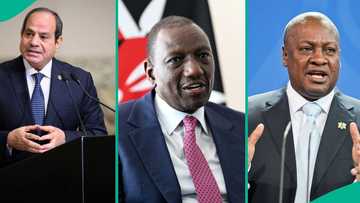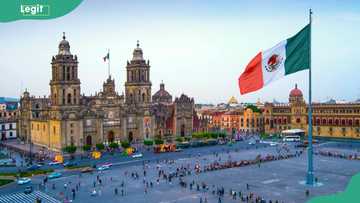Full List of 10 Most Populous Countries by 2100 as Projected by UN
- India is projected to become the world’s most populous country by 2100, surpassing 1.5 billion people
- Sub-Saharan African nations like Nigeria and the Democratic Republic of the Congo are set to experience rapid growth driven by high fertility rates.
- Population momentum and migration will play key roles in shaping demographic trends across regions including Europe, North America, and the Gulf States
India is set to become the most populous country in the world by the year 2100, according to new data released by the United Nations.
The report shows major demographic shifts, with several African nations rising in the global rankings and China’s population declining sharply.

Source: Facebook
Here are the top ten countries by projected population in 2100:
1. India – 1.505 billion
2. China – 633 million
3. Pakistan – 511 million
4. Nigeria – 477 million
5. Democratic Republic of the Congo – 431 million
6. United States of America – 421 million
7. Ethiopia – 367 million
8. Indonesia – 296 million
9. United Republic of Tanzania – 263 million
10. Bangladesh – 209 million
Fertility and migration drive population growth
The UN highlighted that in countries where populations are expected to keep growing through 2100, all three demographic factors, fertility, mortality, and international migration, are contributing positively.
In addition, population momentum, which refers to the built-in growth potential from a country’s age structure, plays a major role.
“Across the group, the potential for growth that is embedded in the age structure will have the largest influence on the future population growth, contributing 69 per cent of growth through 2054 and 53 per cent through 2100,” the report stated.
Regional differences in growth drivers

Read also
Nigeria exits debtors’ list as IMF releases names of 10 African countries with lowest debt in 2025
The report noted wide differences in what drives growth across regions.
Fertility is expected to be the strongest factor in most sub-Saharan African countries, while net migration is likely to be the main driver in many Gulf Cooperation Council (GCC) countries, as well as in Europe, Northern America, and Oceania.
These trends suggest a changing global population landscape, with younger, fast-growing nations in Africa and South Asia playing a larger role in shaping the future.
What is UN?
The United Nations (UN) is an international organisation founded on October 24, 1945, after World War II, to promote peace, security, and cooperation among countries.
It currently has 193 member states and works across a wide range of global issues including human rights, climate change, health, education, and humanitarian aid.
The UN is headquartered in New York City and operates through key bodies such as the General Assembly, Security Council, and specialised agencies like UNICEF and WHO.
Its mission is to foster international collaboration and uphold the principles of justice, equality, and sustainable development for all nations.
Top 10 most populous countries in the world in 2025
Legit.ng earlier reported that as of 2025, the world's population stands at almost 8.2 billion people and is expected to reach around 10.3 billion people in the 2080s, when it will then go into decline.
India secured the first spot in terms of population size in 2025, with over 1.46 billion people, according to recent data from the World Population Review (WPR). China follows closely behind in second place, with just over 1.42 billion people.
Source: Legit.ng




